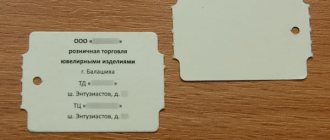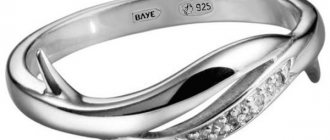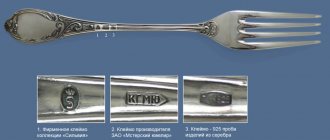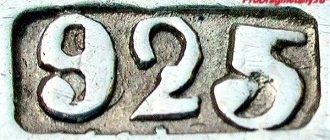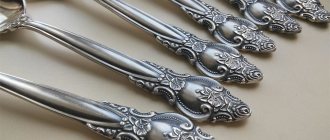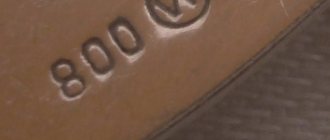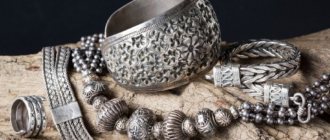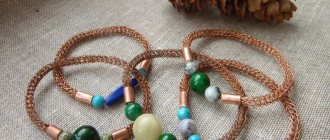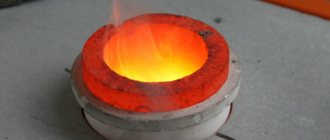The hallmarking of silver in the USSR has changed more than once throughout its history. Immediately after the 1917 revolution in Russia, most jewelry factories and workshops closed. Fearing robbery, owners of large and small enterprises fled abroad. Assay chambers, which were previously involved in hallmarking silver, ceased their work when the Bolsheviks came to power.
At the dawn of the USSR, silver hallmarking was of little concern to the Soviet government. The main goal of the authorities was the requisition of jewelry and their further sale abroad, since the state needed funds to finance the world revolution. The first steps to restore order in the jewelry business were taken in 1918 - a commission formed under the Council of People's Commissars took over control functions.
History of the Assay System
Hallmarks, which were placed on silver items from the eighteenth to the early twentieth centuries, indicated their value. From them it was possible to determine when and where the product was made and even which craftsman worked on it. The assay system in Russia was created by Tsar Peter I. By special decree, four samples of silver and gold were determined; the assay system was called spool.
At that time, only the master and the elder had the right to brand products. Selling anything made of precious metal without a hallmark was prohibited. Those who had the right to make impressions were even trained specifically for this.
Already in the nineteenth century, special chambers were equipped for hallmarking silver and other metals. The print itself has also undergone changes. It began to contain the coat of arms of the city where the item was made, the sign of the inspector (initials) and the sample of the metal. At that time, a new assay charter was also adopted, according to which the empire was divided into assay districts, and the mark took the form of a woman’s head in a kokoshnik. The stamp also contained the initials of the head of the district and a hallmark. Since they began to brand a product indicating the place where it was made, it has become possible to recognize the works of great masters.
Mark on a silver fork
Current price per gram of 875 silver
Below is the rate chart: Silver standard 875 price per gram in rubles.
As of May 30, 2021 the price per gram of silver 875 is 36 rubles. 53 kopecks
The cost of a silver item that has antique value will depend on the assessment of specialists. If it is an item with history or a piece of art, the cost of the item can be very high. It is not worth investing money in 875 silver, although the price is quite stable, it will only be possible to sell it as scrap. To preserve capital, it is better to use metal bars of a higher standard, which are offered by banks.
Types of silver hallmarks in Russia
Now the most common alloys are 925 and 875 silver. Most often, silver hallmarks have the shape of an oval with cut off sides, an image of a woman’s head in a kokoshnik, turned to the right. In the lower left corner there is a letter that indicates the place where the product was tested; the numbers on the left indicate the alloy sample. Products may also be branded as follows:
- The main hallmarks are the marks called the letters “A”, “B”, “C”, “G”. Their presence in the product is sufficient. The stamp of the letter “A” looks like the head of a woman in a kokoshnik in a circle, outside of which there may be a sample. The letter “B” stamp has the standard appearance described above. “B” and “G” have a similar appearance to that corresponding to “A” and “B”, except that instead of a woman in a kokoshnik, they depict a five-pointed star with a hammer and sickle inside. Products made of precious metals were branded with such imprints in the USSR. They are not used now.
- Additional hallmarks include hallmarks of the letters “D”, “E”, “Zh”, “Z”. They have no independent meaning. This mark in itself is not enough to determine the quality of the product; the main one should be next to it. Nowadays only the letter “D” stamp is used. It looks like a rectangle with rounded ends, inside of which there is a sample designation. The letter “E” was used to mark products that did not correspond to the declared standard. The remaining two have been used previously.
- Another form of the main stamp, the letter “B,” denotes products intended for shipment abroad. They differ from the main one in that instead of a woman in a kokoshnik, they depict a ship. This test is enough.
- Products can also be branded with combined hallmarks. They combine the main mark with the “name”, or the mark of the master, which indicates, in addition to the region where the product was tested, the manufacturer himself.
- For the 50th anniversary of the October Revolution, a temporary stamp was introduced, dedicated to the anniversary in honor of the space explorers; it was valid for two months of 1967.
- Until 1994, for church items it was allowed to use only the stamp of the letter “D”, without the main one.
- Until 1997, medals and coins were marked with letters indicating the precious metal in accordance with chemical designations, with a hallmark next to it. If products do not have artistic value, they are now branded in accordance with generally accepted standards.
- There are several sampling systems. Nowadays metric is used, but until the twentieth century, spool-type was used.
The mark can be placed in several different ways. Most often it is applied mechanically. But if the product is thin or especially expensive, a laser type of application can be used. Since items made from precious metals are subject to abrasion, you must be especially careful with laser-applied jewelry. If they are subjected to constant mechanical stress, the sample may be erased.
Assay systems used around the world
Our country currently uses the metric assay system. It shows the number of parts per thousand of pure metal. If you divide this value by 10, you can get its percentage. For example, 585 gold will contain 58.5%, and 925 silver will contain 92.5%.
The karate system is used in many countries around the world. Most European countries and America use it. Pure metal has a purity of 24 carats. If there is only half of it in the alloy, then such a product will have a purity of 12 carats. You can calculate the metric sample from a carat sample using the formula k * m / 1000, where k is the sample in carats, m is the metric sample.
Density of silver depending on the sample
In Tsarist Russia, a spool test was used. Zolotnik was a weight measure that was equal to 1/96 of a Russian pound, approximately four grams.
What does the marking mean?
Typically, the pure composition (999 fineness) of a noble metal (be it gold, silver) is not suitable for the production of a high-quality jewelry product. The objects obtained this way are too fragile. In order to impart improved mechanical properties and create a more saturated shiny color texture, the composition is enriched by adding parts of non-ferrous metals - this is how alloys are obtained. Marking on a product made of precious metal (including silver) shows the content of precious metal in the alloy and serves to determine its fineness.&
Samples of precious metal alloys for jewelry and other silver items, including cutlery, are established by the legislation of the country. The earliest such standard is the “sterling silver” standard (925) - this is the material for the best silver devices: durable and safest for health (since only copper is added to the composition of 999 silver).
Branding of coated products
Silver in this case can be either the base metal or act as a coating. In the first case, the product is most often plated with gold. Then two samples are placed: the first - of the main alloy and the second - of the alloy with which the decoration is coated.
Cutlery is most often plated with silver. This was especially widespread in the USSR. Then, in parallel with the metal sample, the base alloy was marked. At this time the following designations were adopted:
- MN - cupronickel. Sometimes the designation MELCH was also found.
- MNC - German silver.
- AL - aluminum.
- STAINLESS – stainless steel.
In ancient antique objects, this also happened: only a coating test was given, without indicating the main alloy. This is quite dangerous, since a silver-plated product can be mistaken for being made of pure metal.
The following silver alloys are subject to hallmarking all over the world:
- 800 sample. Composition: 80% silver, the rest copper. It oxidizes quickly and has a pronounced yellowish tint. 830 sample has characteristics similar to the previous one.
- Sample 875. Contains 87.5% silver. Very often used for making tableware and decorations.
- 925 sample is the most common. It has an optimal price-quality ratio. It has high anti-corrosion properties and does not have a yellow tint. Very easy to change shape. Mainly used for jewelry.
- 960 standard is used by artists when working with enamel, as well as for jewelry, especially abroad.
Composition and properties of silver alloy with 875 purity
The number 875 means that per 1000 g of alloy there are 875 g of pure silver and 125 g of various impurities.
Soviet 875 silver has established itself as an example of quality, so products produced during the Soviet era, when standards were strictly adhered to, are valued much higher than products with modern markings.
Nowadays, most often, copper is used as an alloy, which gives the product strength, but also a yellowish tint. Aluminum, nickel, and cadmium can also be used as impurities. Each of the additives directly affects the color and physical properties of the resulting alloy. Some production options may have used platinum and palladium. Interestingly, nickel and platinum give the alloy a color that cannot be distinguished from the color of white gold, which unscrupulous sellers can take advantage of by offering to purchase an 875 gold item.
Source Jewelry (Authors: V.I. Marchenkov) p. 44.
How can you understand, by looking at the numbers 875 on the product, whether it is gold or silver?
It's very simple: gold is not marked with the 875 hallmark, just like platinum. Only silver can have such markings.
The presence of copper in the composition, although it makes the alloy hard, causes rapid darkening of the metal. Therefore, products made from 875 silver are almost always coated with gold, rhodium or enamel, which preserves and enhances their shine. Also, when copper is added, ductility is lost, so it becomes difficult to give small elegant details to products.
Chronology of sample use in our country
- Since 1899, on the basis of the newly introduced statute, an assay mark was established in the form of a woman’s head in a kokoshnik, only still turned to the left, and an assay in the spool system.
- In 1908, the head was already turned to the right, and a letter was added to the mark indicating the assay district to which the product belonged; the sample was still spool-like.
- In 1927, a new brand was introduced in the Soviet Union: it depicted the head of a worker with a hammer. And also a new sample system was introduced - the same one that is used now, metric. The assay district was still designated by a letter of the Greek alphabet.
- In 1958, prints with the image of a star with a hammer and sickle were introduced. The letter of the Greek alphabet was replaced with a letter of the Russian alphabet.
- The prints acquired their modern appearance in 1994, but were used alongside the old ones until April 2002.
And although silver in the form of jewelry is rarely used as an investment, it is still worth paying attention to the hallmark when purchasing it. Especially if jewelry and cutlery are bought secondhand, which is not recommended. It is possible to fake a sample, but it is difficult and dangerous. Therefore, it can be considered a sufficient guarantee of the quality of the metal.
Principles of branding
The mark can be located inside or outside the product. The very first and most popular method is mechanical. Every jewelry maker should have this art. At first, an ordinary hammer was used for this, and then a special mechanism was made that carried out the process automatically. There were also special anvils, without which it was almost impossible to accurately apply a jewelry stamp. The machines had already been introduced when mass branding was required.
The electric spark method is carried out with the participation of electrodes. For this purpose, a special installation was made, with the help of which the print is burned out with a spark. If the brand has jumpers at the top between the outline and the badge, it means that this item was branded using the electric spark method. This method is more effective, but not all jewelry workshops and factories use it, because such an installation costs a lot of money.
